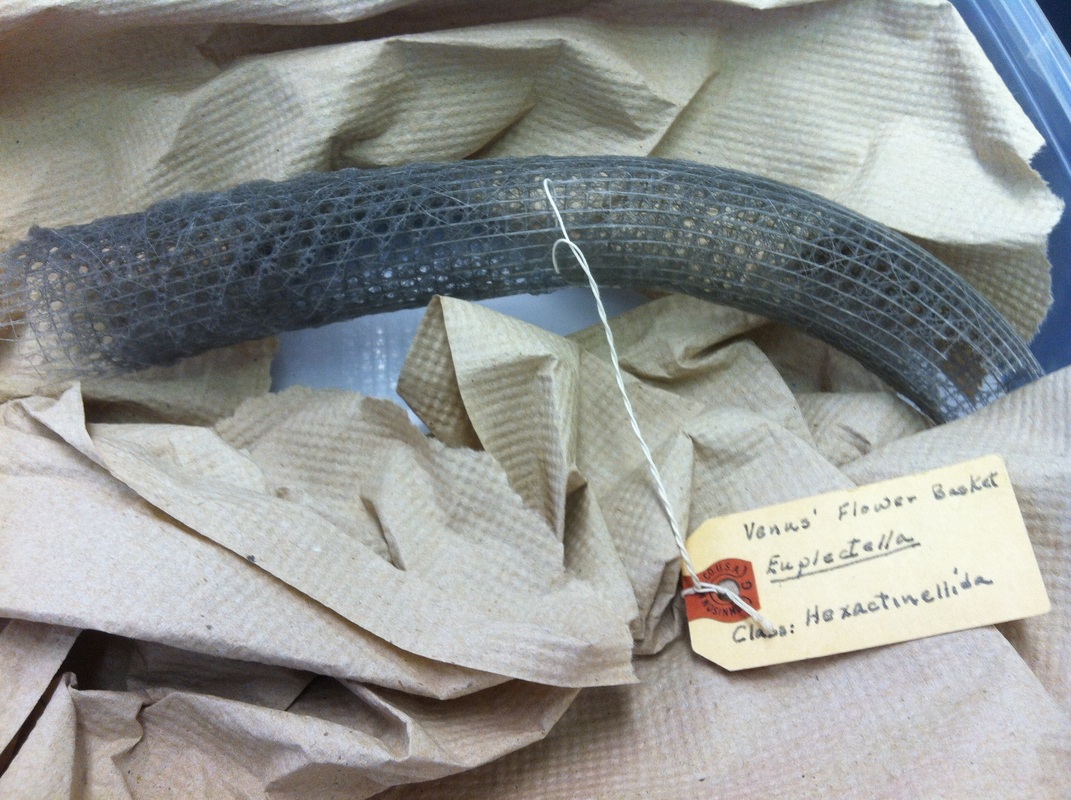Classification:
Phylum: Porifera
Class: Hexactenellida
Scientific Name: Euplectella aspergillum
Common Name: Vensus' Flower Basket
Class: Hexactenellida
Scientific Name: Euplectella aspergillum
Common Name: Vensus' Flower Basket
General Characteristics:
The Venus Flower Basket is radially symmetric and moderately sized, ranging from 7.5cm-1.3m in height. It has a unique lattice structure of fused siliceous spicules, giving it a glass-like look. A net of living tissue surrounds the siliceous spicules that is created by the amoeboid cells called archaeocytes. Within the tubular net are finger-like chambers covered in choanocytes that open into the spongocoel, allowing water to mover through the sponge. The base of Venus' Flower Basket has a tuft of elongated spicules that are used to attach to the ocean bottom. Under unfavorable conditions, reproduction is asexual. Under more favorable conditions, reproduction is likely to be sexual.
Habitat:
Venus' Flower Basket is found attached to rocky areas on the sea floor in depths from 100-1000m below the surface. Their geographic range consists of the western Pacific Ocean near the Philippine Islands.
Importance to Humans:
Little is known about the Venus Flower Basket largley due to the depth at which this animal lives. There is no known importance or direct relationship with humans.
Sources:
Soares, Beau McKenzie. "Euplecta aspergillum". Retrieved from: http://animaldiversity.ummz.umich.edu/accounts/Euplectella_aspergillum/.

